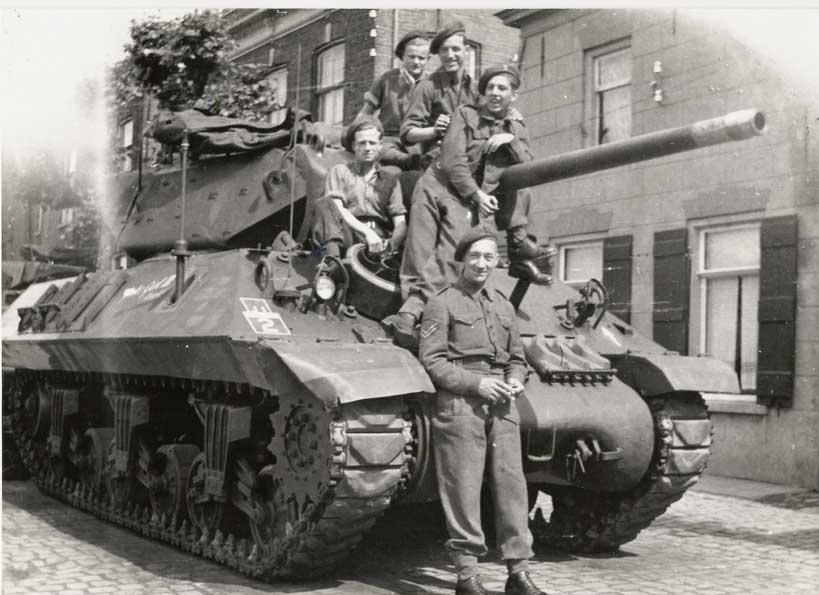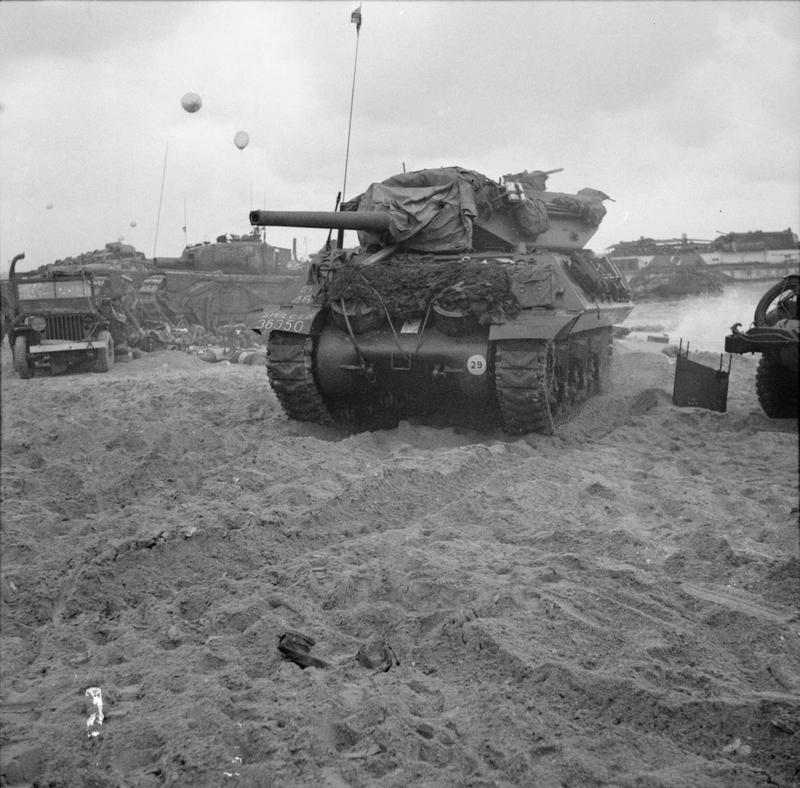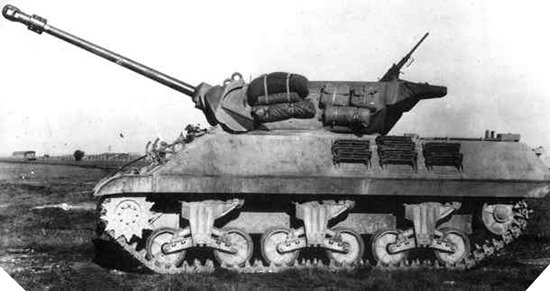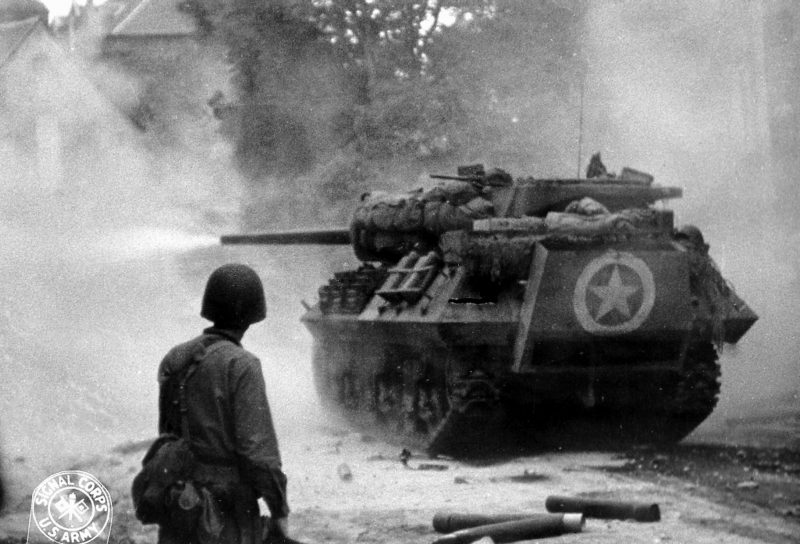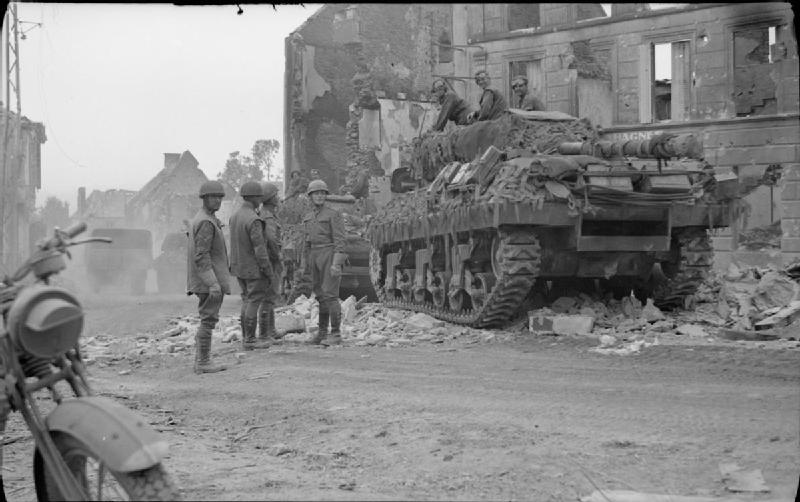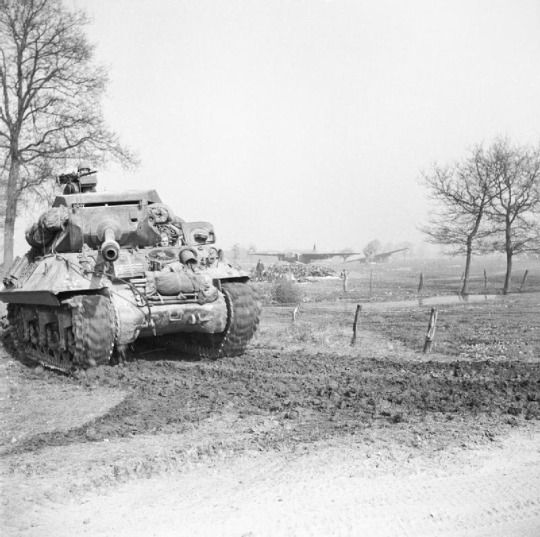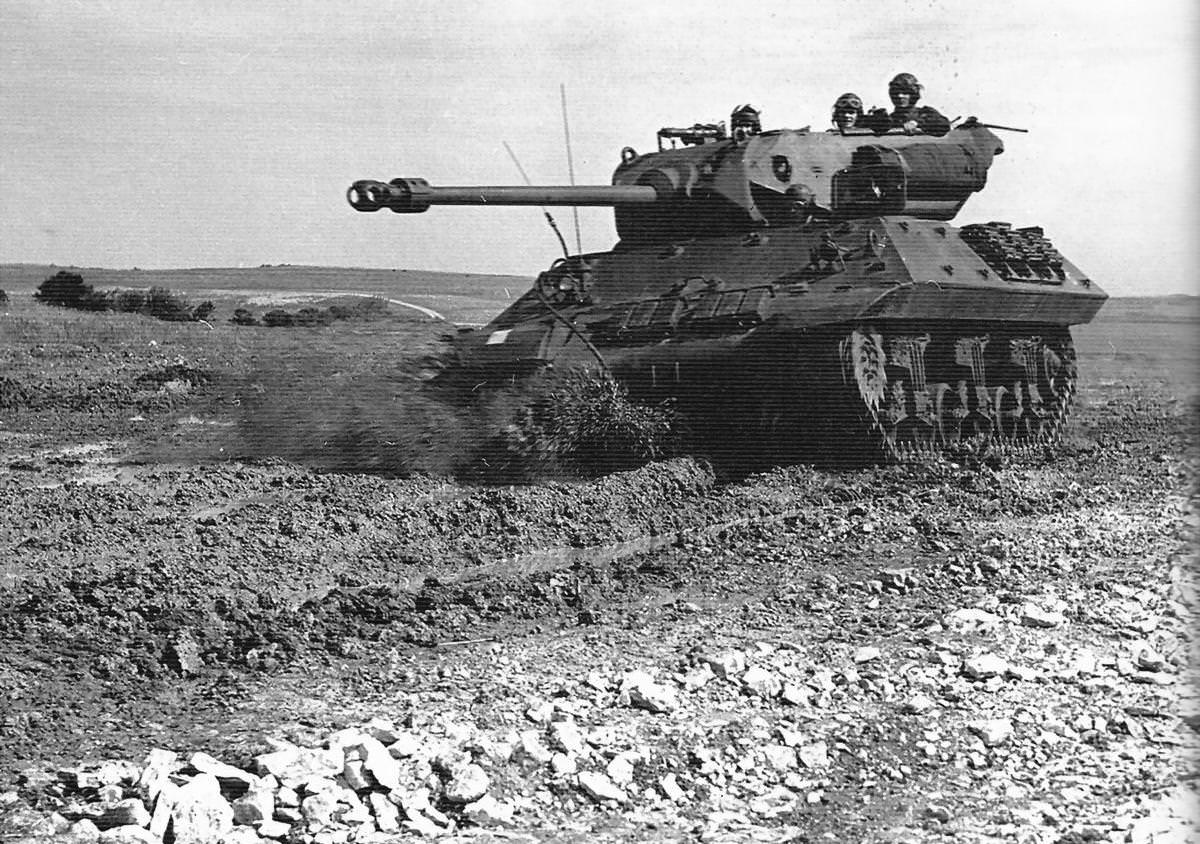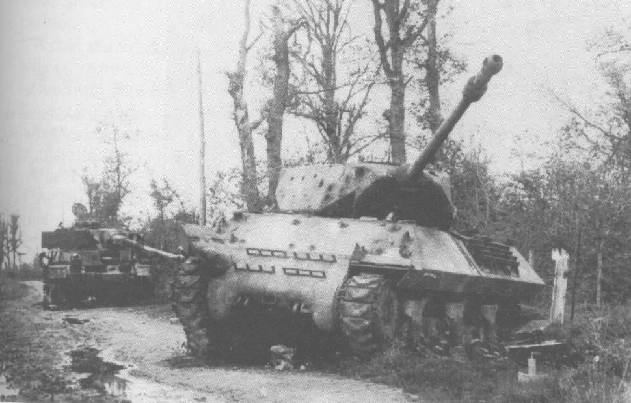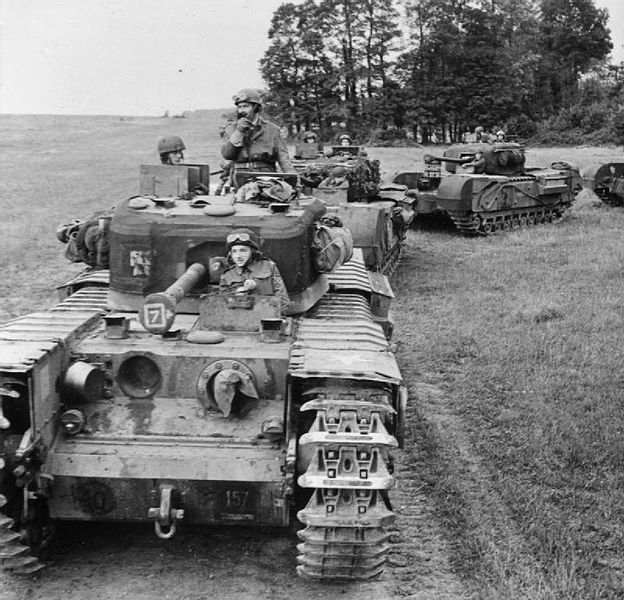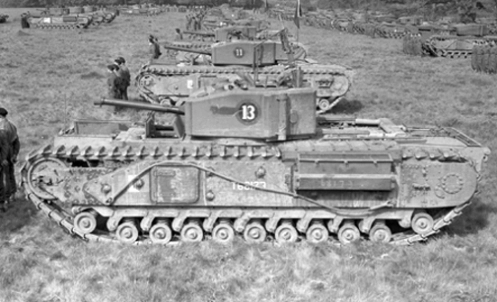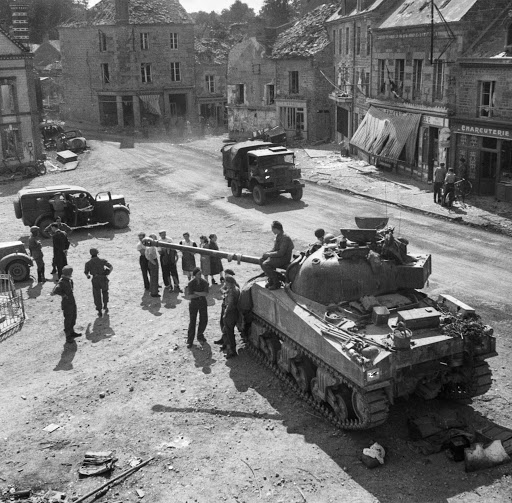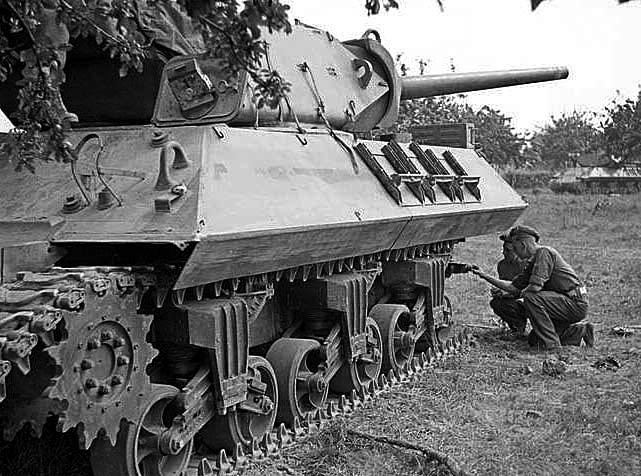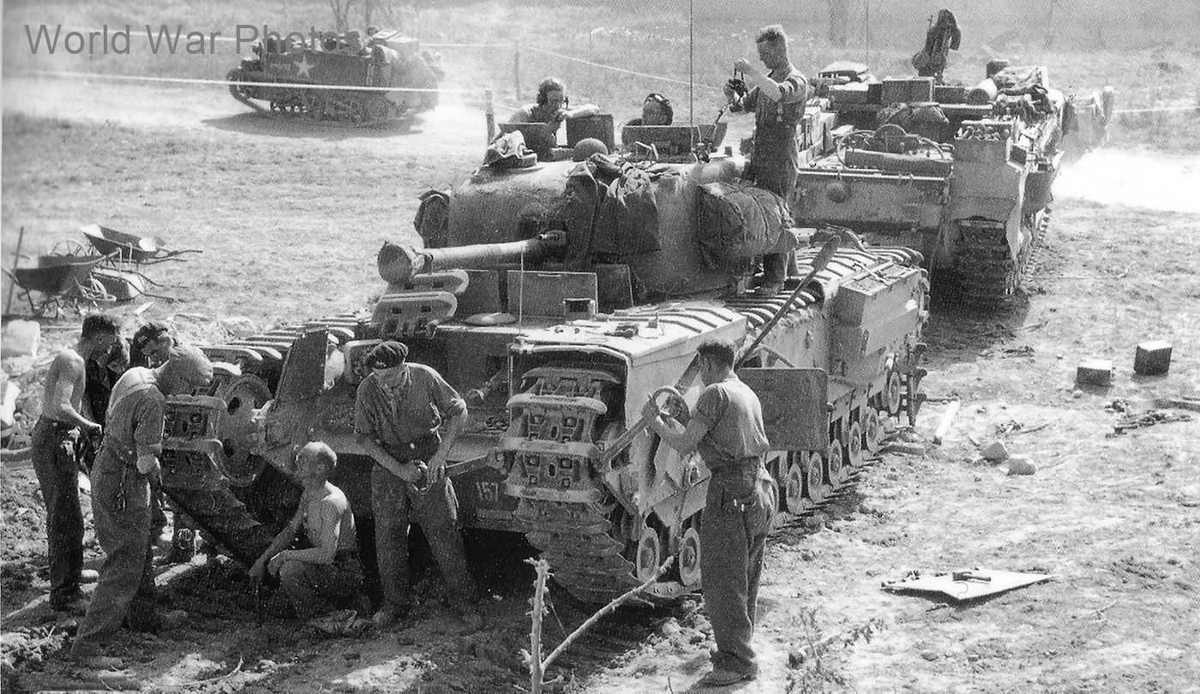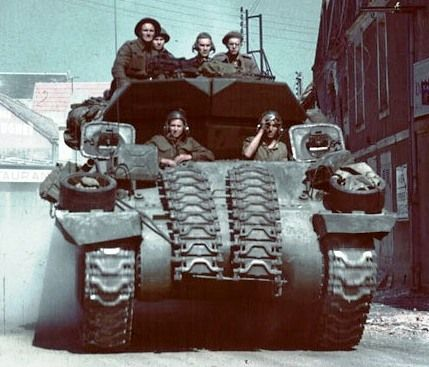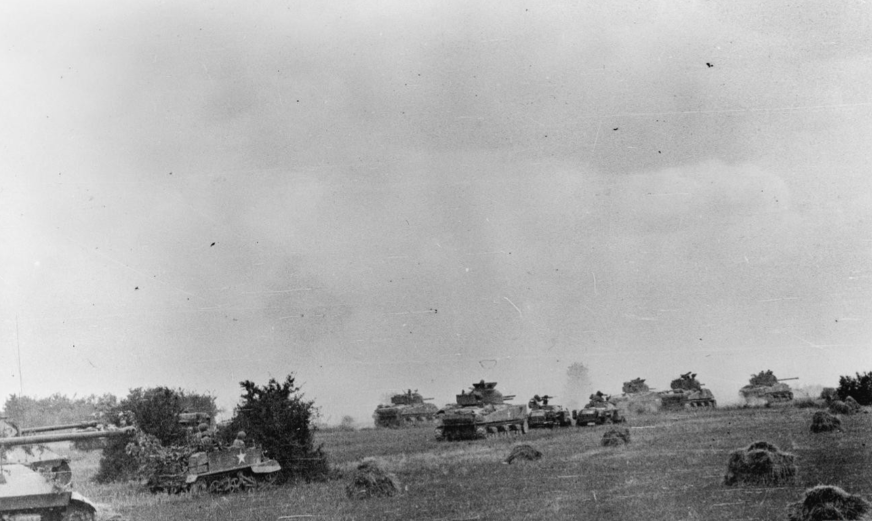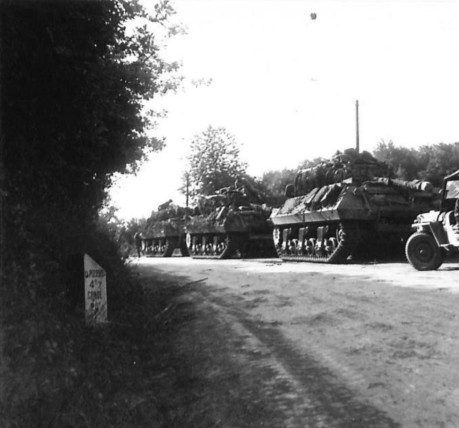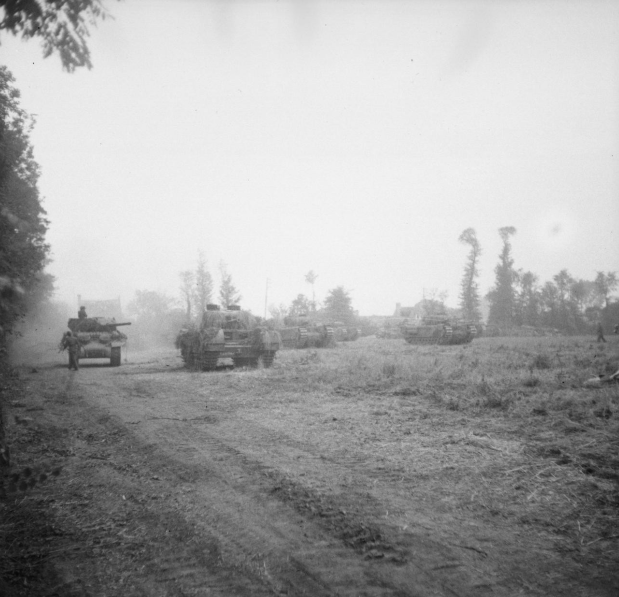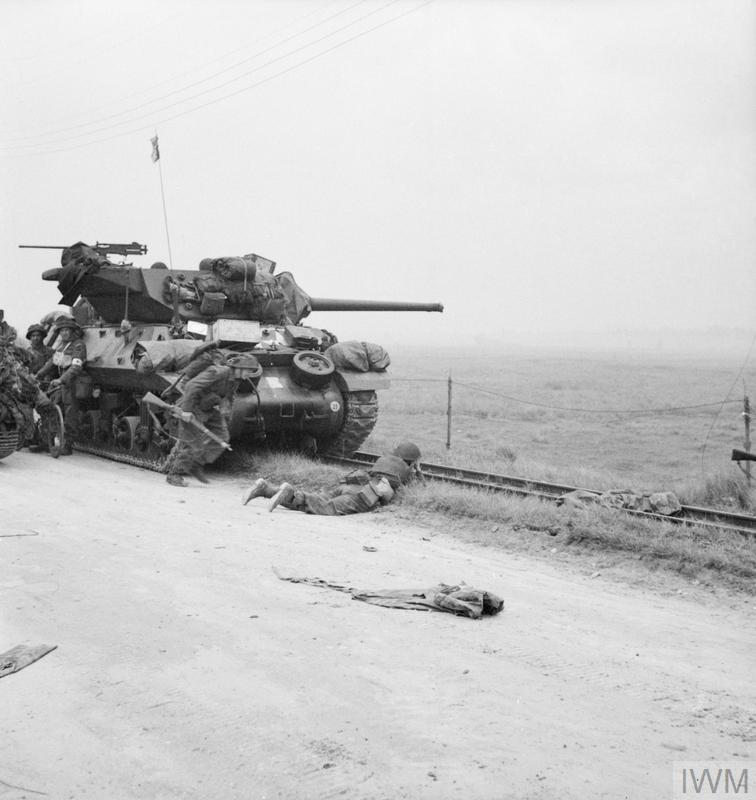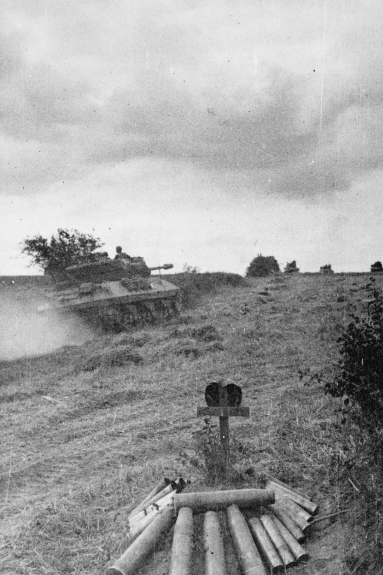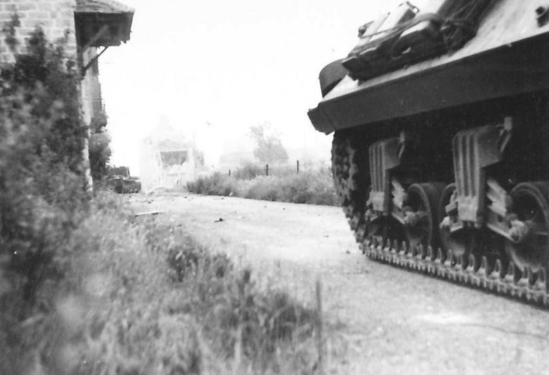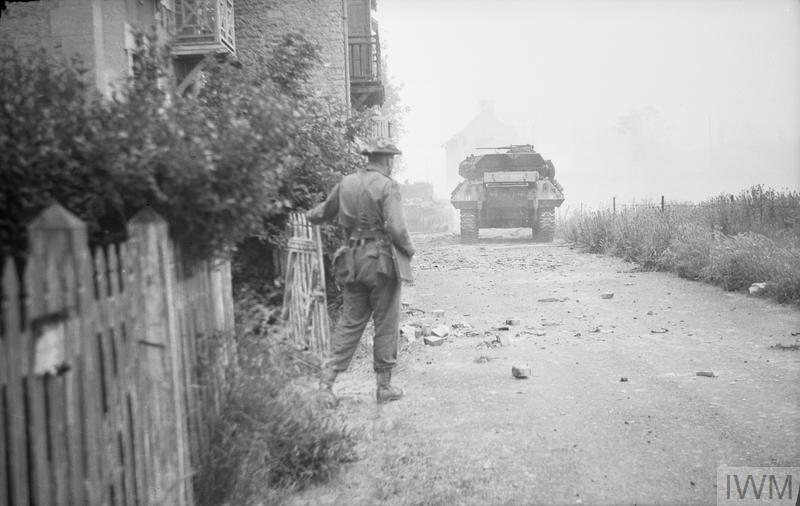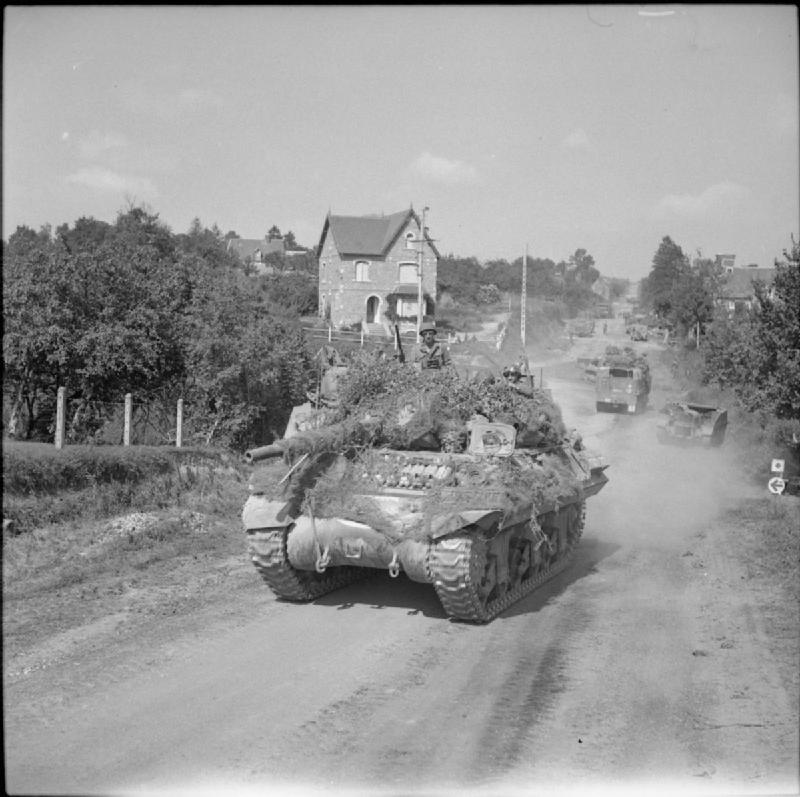M10 and M10 17 Pounder supporting CHURCHILLS in Normandy
A British perspective anchored around Tank Brigades.
tldr: unsung hero /1
#WW2 #SWW #History
A British perspective anchored around Tank Brigades.
tldr: unsung hero /1
#WW2 #SWW #History
Few people care for M10s in Normandy.
They fall into a somewhat odd category of cropping up in Assault Divisions' anti-tank regiments and corps anti-tank regiments.
The British approach was really focused around self-propelled anti-tank guns, over tank destroyers. /2
They fall into a somewhat odd category of cropping up in Assault Divisions' anti-tank regiments and corps anti-tank regiments.
The British approach was really focused around self-propelled anti-tank guns, over tank destroyers. /2
M10s were open topped self-propelled guns armed with a 3" or 17 pounder, hence armament or C suffix to denote type.
Despite this key limitation, being lighter armoured than a Sherman and having no bow MG, it was tricky convincing infantry officers they were not tanks. /3
Despite this key limitation, being lighter armoured than a Sherman and having no bow MG, it was tricky convincing infantry officers they were not tanks. /3
I mean they DO look rather like tanks, right?
Again, they pinch the M4A2 Sherman's lower hull, VVSS suspension, and many other parts.
Regular readers may note this proven, cross platform theme on parts/compatibility/industrial base. /4
Again, they pinch the M4A2 Sherman's lower hull, VVSS suspension, and many other parts.
Regular readers may note this proven, cross platform theme on parts/compatibility/industrial base. /4
Armour varied between 9 to 57.2mm, crewed by five men and M10s stood 8'2" tall (2.57m).
The open topped turret did make ammunition access easier, and enable swift access to the .50 or Bren gun, but left the crew vulnerable to mortar bombs, airburst rounds and grenades. /5
The open topped turret did make ammunition access easier, and enable swift access to the .50 or Bren gun, but left the crew vulnerable to mortar bombs, airburst rounds and grenades. /5
I'm also going to state, again, that 'Achilles' was mostly a post-war moniker that probably originated in MEF in late 1944, which was then adopted much wider postwar when A-names were adopted and entrenched through histories written by those familiar with these AFVs etc. /6
M10s granted regiments a heavily hitting, mobile asset which could keep up with armour.
This was a pretty big deal as towed guns really crawled cross country whether towed by halftrack or quad (maybe Crusader gun tractors) and 17 Pounders took hours to dig in. /7
This was a pretty big deal as towed guns really crawled cross country whether towed by halftrack or quad (maybe Crusader gun tractors) and 17 Pounders took hours to dig in. /7
This allowed swift intervention, for M10s to race over rough ground or freshly cleared tank tracks and be in position ready to support infantry battalions long before their supporting 17 pounders could be dragged up and dug in. /8
Given the open topped nature crews learned the imperative to stay relatively mobile & not to get dragged into prolonged engagements in the open.
Some added pretty fancy armoured shutters to cover the exposed fighting compartment & reduce exposure, but arguably slowed bailing. /9
Some added pretty fancy armoured shutters to cover the exposed fighting compartment & reduce exposure, but arguably slowed bailing. /9
Tank Squadrons have three Squadrons each w. 5 troops. Most troops consisted of three gun tanks, one armed with 6 Pounder and two with 75mm.*
*I'll look at Guards Tank Brigade in future, who operate a bit differently. /10
*I'll look at Guards Tank Brigade in future, who operate a bit differently. /10
Now the three tank troop is slightly too small to operate effectively in the event of casualties, which sees an eventual shift to many tank regiments operating around four troops of four tanks. /11
In contrast, most armoured regiments operate with three squadrons each w. four troops, three 75mm Shermans and one Firefly.
So.... the 5 troop Tank Sqn actually has an extra dedicated anti-tank Churchill III or IV in there. /12
So.... the 5 troop Tank Sqn actually has an extra dedicated anti-tank Churchill III or IV in there. /12
This could be further bolstered by the attachment of M10s from the corps anti-tank regiment.
The Corps Anti-Tank Regiment usually had two self-propelled batteries - each with three troops of four M10 (exact details on whether 3" or 17 Pdr vary early on). /13
The Corps Anti-Tank Regiment usually had two self-propelled batteries - each with three troops of four M10 (exact details on whether 3" or 17 Pdr vary early on). /13
The corps anti-tank regiment often ended pretty spread out across the corps area, filling in where needed and strengthening vulnerable spots.
Their SP batteries offered more dynamic assets, and could be sent to the spiciest parts of the line. /14
Their SP batteries offered more dynamic assets, and could be sent to the spiciest parts of the line. /14
Employment of Churchills developed greatly during the campaign... *an area I could write a book on or do an amazing docu on*
But a tank squadron would often support an infantry company, on the basis of one troop per platoon - and in support would usually be your M10s. /15
But a tank squadron would often support an infantry company, on the basis of one troop per platoon - and in support would usually be your M10s. /15
The SP Battery would usually send a troop to support a Tank Squadron, which suddenly means the Churchills have an additional four M10 17 Pounders advancing behind them - ready to be directed against armour.
Much more AT and HE firepower than an Armoured Squadron. /16
Much more AT and HE firepower than an Armoured Squadron. /16
So we have this odd situation that when supported by a Troop of M10s, Tank Squadrons of Churchills would best their Armoured Squadron compatriots at short, medium and long ranges.
5 x 6 Pdr and 4 x 17 Pdr vs 4 x 17 Pdr armed Fireflies. /17
5 x 6 Pdr and 4 x 17 Pdr vs 4 x 17 Pdr armed Fireflies. /17
Now both Churchills and M10s were attractive targets for the enemy, and there were general policies of stonking armour to shit up or shake up AFV crews by both sides.
You may not kill it, but you may seriously fuck it up with a 105mm HE shell or 25 Pounder. /18
You may not kill it, but you may seriously fuck it up with a 105mm HE shell or 25 Pounder. /18
So you have the situation where the M10s are frequently following up Churchills on the battlefield and being pummelled by mortar and artillery fire, inflicting many casualties... and infantry calling them 'steel coffins'.
They are undeniably under armoured for this. /19
They are undeniably under armoured for this. /19
However, provided they stayed in the fight long enough they could easily engage armour at range, and immediately on hand to deal with counter-attacks.
In this, M10 and M10 17 Pdr repeatedly proved themselves in smashing or damaging enemy armour before effective intervention. /20
In this, M10 and M10 17 Pdr repeatedly proved themselves in smashing or damaging enemy armour before effective intervention. /20
This in of itself was essential.
British doctrine in Normandy was (this is probably close to one of the few pieces of universal British doctrine in theatre) anchored around rapid CONSOLIDATION to defeat the COUNTER-ATTACK.
German doctrine prioritised RAPID COUNTER-ATTACK. /21
British doctrine in Normandy was (this is probably close to one of the few pieces of universal British doctrine in theatre) anchored around rapid CONSOLIDATION to defeat the COUNTER-ATTACK.
German doctrine prioritised RAPID COUNTER-ATTACK. /21
So on a good day, when the Tank Regt's recce tp of Stuarts was IDing AT guns and forewarning of armour, Gunners became the Tankies' watchful snipers, set back and ready to respond as needed.
Damned helpful given the M10's infamously laborious traverse speed. /22
Damned helpful given the M10's infamously laborious traverse speed. /22
At the same time infantry would (assuming their No. 38 sets are not swamped) help the tankies identify anti-tank guns and MGs, continuing their advance, as supporting FOOs direct their guns to smash additional opportunity targets and help maintain momentum. /23
So when someone next throws some crappy Top Trump notion of AFV dust up on the table, consider force composition and how they really fought.
As the real truth is that this sort of asset was much more routinely integrated in combined arms than one would imagine. /24
As the real truth is that this sort of asset was much more routinely integrated in combined arms than one would imagine. /24

 Read on Twitter
Read on Twitter